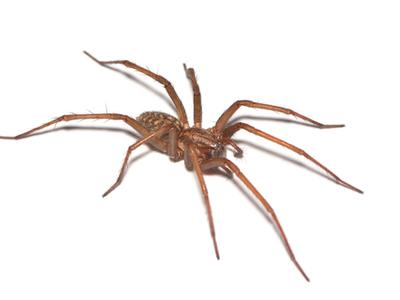Whether you love or hate spiders, you have to admit that their webs are interesting. You probably know that most spiders use their webs to catch prey, but there’s a lot more to know. For example, spider webs have the tensile strength of steel (tensile strength is the largest stress a material can withstand before breaking). In fact, spider webs can absorb more energy without breaking than a Kevlar vest!
Even if you think spider webs are gross, it’s beneficial to learn a little bit more about them. By getting to know where and why spiders weave their webs, you could learn how to get and keep spiders away from your property. That’s why the experts at Assured Environments have put together the five W’s of spider webs.
1. The Who: Spiders that Build Webs

All spiders have the ability to extrude silk from their spinneret glands which are located on the abdomen. However, different types of spiders use their silk for different things.The most common web-building spiders are members of the Araneidae, or “orb-weaver” family.
2. What: The Material of Spider Webs
Spider silk is a protein fiber made primarily from sequences of the amino acids alanine and glycine. Here’s how spider silk becomes a web:
- Spider silk starts as a liquid when it’s first created in the spider’s body
- When the process for creating silk begins, this protein liquid starts flowing toward the spider’s spinneret gland
- Spider webs are made of various types of silk, secreted by as many as seven different spinneret glands.
- Each gland produces a different silk which services a different purpose. Most webs use sticky and non-sticky silk.
Spiders use non-sticky silk to create footholds, which they use to navigate without getting stuck in the web. There are also types of silk used for structural integrity, protecting eggs, immobilizing prey, and even bonding separate threads of webbing together.
3. When: The Best Time to Weave a Web

Spiders, especially the common orb-weaving spiders, wait until night to build their nests because they are at their most vulnerable during web-building. Not only are they lacking the defensive properties that the web provides, the process of weaving requires all the spider’s attention.
The cover of darkness makes it harder for prey and predators alike to see the spider while it’s working. Remember: as far as the spider is concerned, you are a particularly large and dangerous predator, so these rules apply to you, too! Spiders in your business or your home will usually hide until everyone has gone to bed and they feel safe to commit to building their webs.
4. Why: The Purpose of Spider Webs
Spider webs have many uses, including:
- Catching food. Spider food, like flies and fleas, get caught in the spider web and entangle themselves further as they struggle to escape.
- Reproduction. Male spiders create “sperm webs” which can fertilize eggs laid on them. Once spiders are born, webs serve as a nest for protecting the young spiders and giving them a food source.
- Sensory awareness. Motion sends vibrations through the threads, causing the spiders to become alerted to the presence of whatever created the vibration. These vibrations are used both for hunting and escaping from predators.
5. Where: The Location of Spider Webs
In order to build a web, a spider must attach seven guy lines to nearby surfaces that can support them. Guy lines are the only part of a spider’s web that actually touches the web’s surroundings. They can be attached to just about any surface and are very thin, making them hard to see. Spiders can also extend their guy lines along a surprisingly large area, so it’s very difficult to totally web-proof your property.
Spiders also need to build in places where they’re likely to catch prey. Spiders are really good at finding the routes that other pests, like flies and fleas, use to get around. That means if you find a cobweb in your home or business, it’s very likely that’s also where other pests are getting into your home.
Do you have a spider problem in your property? We can help.
Spider webs are pretty amazing, but we don’t blame you for not wanting them in your home or office. If you have a spider problem, get in touch with Assured Environments today. We’ve learned quite a bit about these creatures in our 100+ years of operation and we’re more than willing to bring all that wisdom to you.



